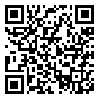BibTeX | RIS | EndNote | Medlars | ProCite | Reference Manager | RefWorks
Send citation to:
URL: http://ijdld.tums.ac.ir/article-1-5352-en.html

 , Elham Hashemi dehkordi2
, Elham Hashemi dehkordi2 
 , Kiyavash Fekri2
, Kiyavash Fekri2 
 , Afsaneh Nekoee *
, Afsaneh Nekoee * 
 3, Atefhe Emadi2
3, Atefhe Emadi2 

2- 2. Department of Pediatrics, Hajar Medical Educational Therapeutic Center, Shahrekord University of Medical Sciences , Shahrekord, Iran
3- 2. Department of Pediatrics, Hajar Medical Educational Therapeutic Center, Shahrekord University of Medical Sciences , Shahrekord, Iran ,
Gangliosidosis GM1, is a lipid storage disorder due to deficiency of the lysosomal enzyme &beta-galactosidase. This deficiency leads to lysosomal accumulation of gangliosidosis GM1 to be, which contributes to swelling, cell damage and dysfunction of the organs. Gangliosidosis GM1a rare neurodegenerative disorder. Mongolian spots are significant clinical sign in some of the metabolic diseases, such as gangliosidosis GM1, but limited information is available. Hepatomegaly, hypotonia, edema, seizures, and skeletal malformations and Cherry red spot in the macula of the eye are of other symptoms of the disease. In this paper, we present a 10-month-old child with gangliosidosis GM1 type 1 with extensive mongolian spots who was referred the Hajar Medical Educational Therapeutic Center Shahrekord.
Received: 2015/05/30 | Accepted: 2015/05/30 | Published: 2015/05/30
| Rights and permissions | |
 |
This work is licensed under a Creative Commons Attribution-NonCommercial 4.0 International License. |



